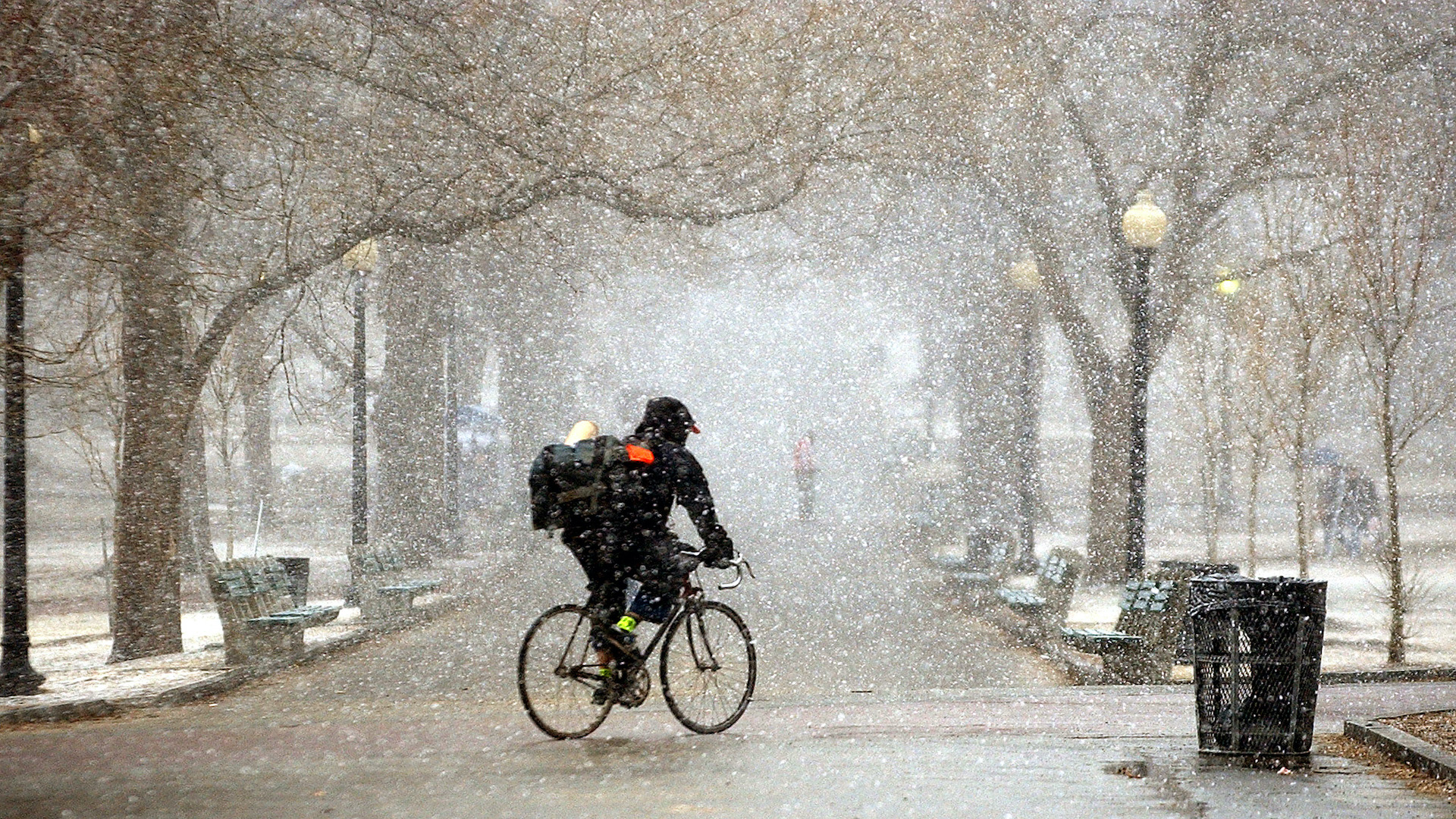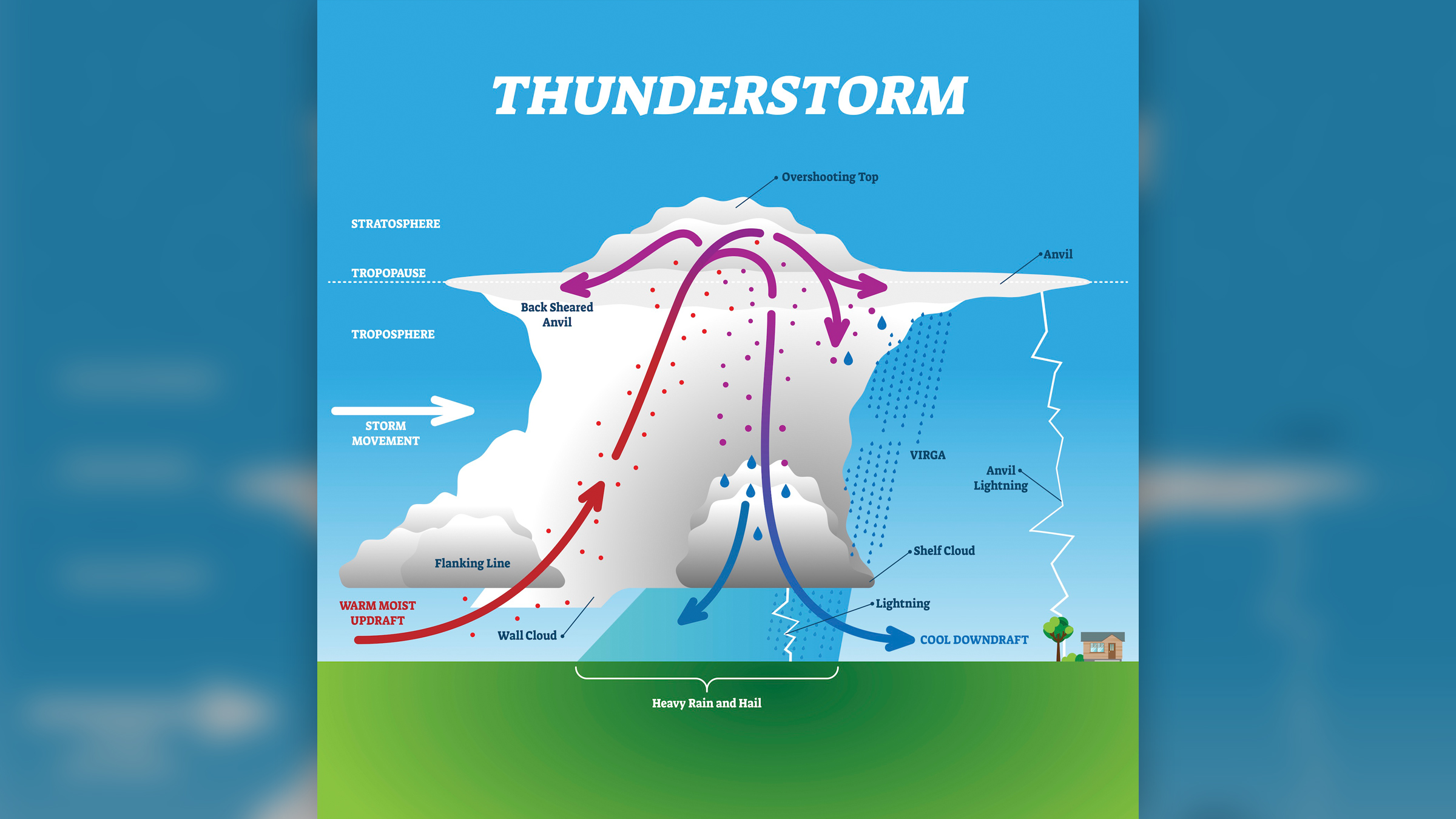What is a squall?
There are different types of squalls, including a sudden windy cold front and a short-term burst of heavy snow and wind.

If you've ever been warned that a squall is on the way, it may sound ominous. But what, exactly, is a squall?
In the early 20th century, a squall was a sudden windy cold front. The term can still refer to a sudden strong wind that increases by 16 knots (18.4 mph, or 29.6 km/h) and sustains 22 knots (25.3 mph, or 40.7 km/h) for at least a minute, according to the National Oceanic and Atmospheric Administration.
In 2018, the National Weather Service started using the term "snow squall" to warn travelers and commuters of short-term bursts of heavy snow and high winds that can cause sudden white-outs and ice roads over in minutes.
But most often, experts use "squall" as shorthand for "squall line," a line of thunderstorms.
Oftentimes, storms "aren't just individual little isolated clouds," said Adam Varble, an atmospheric scientist at the Pacific Northwest National Laboratory in Richland, Washington. "They like to form these structures." A squall line is one way thunderstorms organize. It's a thin and long — though not perfectly straight — line of storms. You've likely watched a meteorologist point to such lines of storms inching across a map.
Related: Bombogenesis: What's a 'bomb cyclone'?
Squall lines are common in the U.S. east of the Rockies, according to the National Weather Service. They can extend hundreds of miles in length but are typically only 10 to 20 miles (16 to 32 kilometers) wide. If a squall line passes over you, you'll likely experience high winds, heavy rain and cool air. That's because the squall line occurs along the boundary between cold and warm air in the storm, Varble said.
Under the right temperature and moisture conditions, rising air will condense water vapor to form a cloud, Varble said. That condensation releases heat — the same heat that drives storms. Under the right conditions, the heat can cause the cloud to become more buoyant and rise, as it is lighter than the colder air around it. This causes the rising air to pick up speed.

When the condensed drops of water or ice grow large, they begin to fall as precipitation. Evaporating precipitation cools air, making it denser than the surrounding warm air. This cooler air sinks and flows outward at the ground creating a cold-air boundary (also known as the gust front). The dense cooler air forces lighter warm air up which fuels the growth of new storms. This collection of connected storms along the gust front is a squall line.
"As long as there are the right temperature and moisture conditions to support buoyant upward-moving air in clouds, the storm squall will keep propagating outward," Varble said. It will produce heavy rains, sharp winds and even an occasional tornado.
Squall lines affect more than just weather. Storms heat and dry the atmosphere, but different storm structures produce different heating and drying impacts, Varble said. Current research is investigating these differences because they influence local climate and weather patterns, he said.
Sign up for the Live Science daily newsletter now
Get the world’s most fascinating discoveries delivered straight to your inbox.

Donavyn Coffey is a Kentucky-based health and environment journalist reporting on healthcare, food systems and anything you can CRISPR. Her work has appeared in Scientific American, Wired UK, Popular Science and Youth Today, among others. Donavyn was a Fulbright Fellow to Denmark where she studied molecular nutrition and food policy. She holds a bachelor's degree in biotechnology from the University of Kentucky and master's degrees in food technology from Aarhus University and journalism from New York University.










